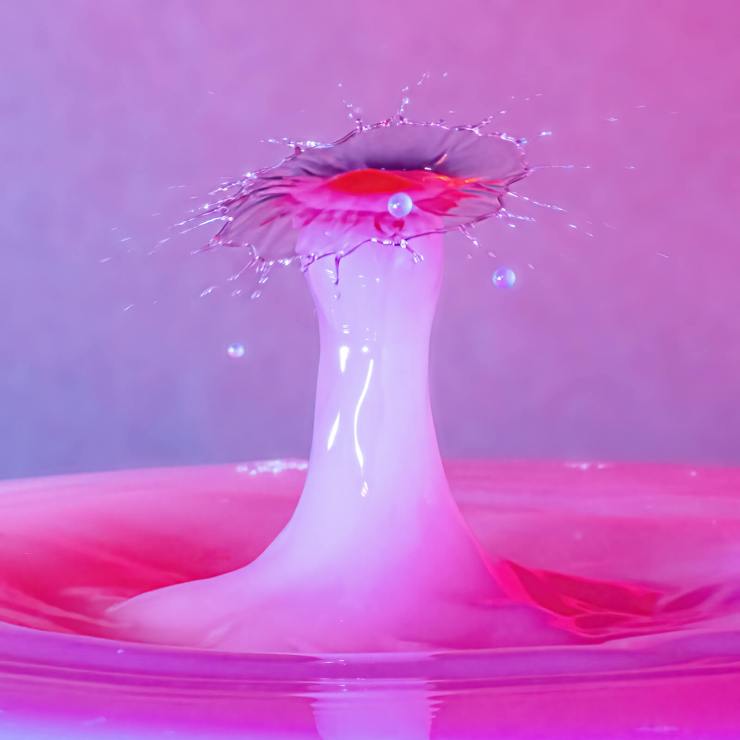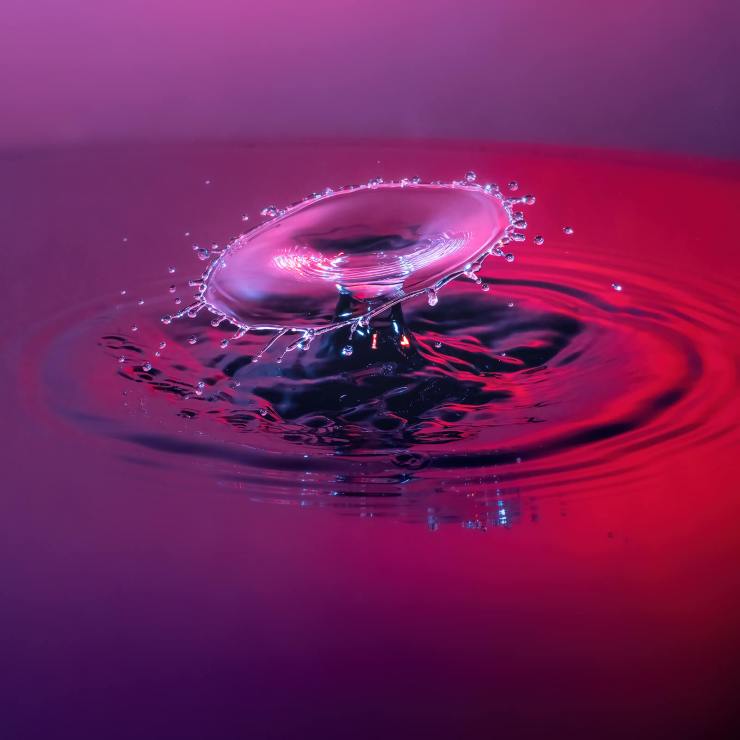I’ve shared my water droplet photography gear setup here. You don’t need everything I shared there, but it will give a good head start on creating some solid images. The next steps start a day or two before.
Water droplet solutions
There are different places liquids will be used in droplet photography. You will have a liquid that catches and a liquid that is dropped. Let’s start with the falling liquid. Using plain water can work. But, what you’ll find is fairly thin splashes will tend to explode into many tiny drops. Adding a thickener to your water helps hold you drops tighter as it is more viscous. You can find many tutorials on YouTube by using the search term ‘Xanthan Gum for water drop photography.’
A quick description is to add a half teaspoon of Xanthan Gum to a cup of warm water. It’s best to have the water swirling and add the gum slowly as you stir. Additionally you might want to place that mixture in a small jar and shake. For best results take that solution and strain it through some cheesecloth once or twice to ensure residual particles are removed. Let set overnight. This becomes your base.

The day of the shoot
Break out your mixing cup and add a teaspoon full of the previously made base to a cup of water. Mix well. Add more base until your solution is about the consistency of milk or half and half. Start with just the plain water slightly thickened for your shoot. This liquid will be placed in the Pluto Dropper when it’s time to start.
The reservoir
Your reservoir container can be of different depths, colors and materials. Experimentation is key to getting the look you want for your droplets. You see the inexpensive black plastic container I use. That’s a good place to start.
Reservoir liquid
The receptacle or depository for where the drops fall can be plain tap water. Using plain water is less expensive than other solutions and works perfectly well. If you use a black container solid color will reflect richly from your gelled flashes. This can lead to a bit of black with no detail in the droplet where it is facing away from the flash. It can be a great look.
Adding milk, cream half or half will result in a white surface and an opaque droplet. I found almond milk to work very well. You don’t need a lot to make major changes in your solution for a completely different look.

Variety
Many types of liquid can be employed in your experiments. Adding food coloring to your dropper can make for a totally different look. I’ve read about other liquids such as Dettol disinfectant which will make your drop zone cloudy without the mess of dairy products. Remember any time you change the viscosity of the dropped solution you will probably have to restart your flash timing to create catch the droplet crash.
In the next article let’s get splashing, crashing and firing!
Yours in Creative Photography, Bob
Tell your story with the second annual Visual Storytelling Conference!
Experience four days of interactive, online training sessions featuring a range of educational content with experienced photographers and content creators. This free event kicks off with a series of technical boot camps to build essential skills, followed by live, online sessions on photography, video, business and social media. Join live from March 10-13, 2022!
